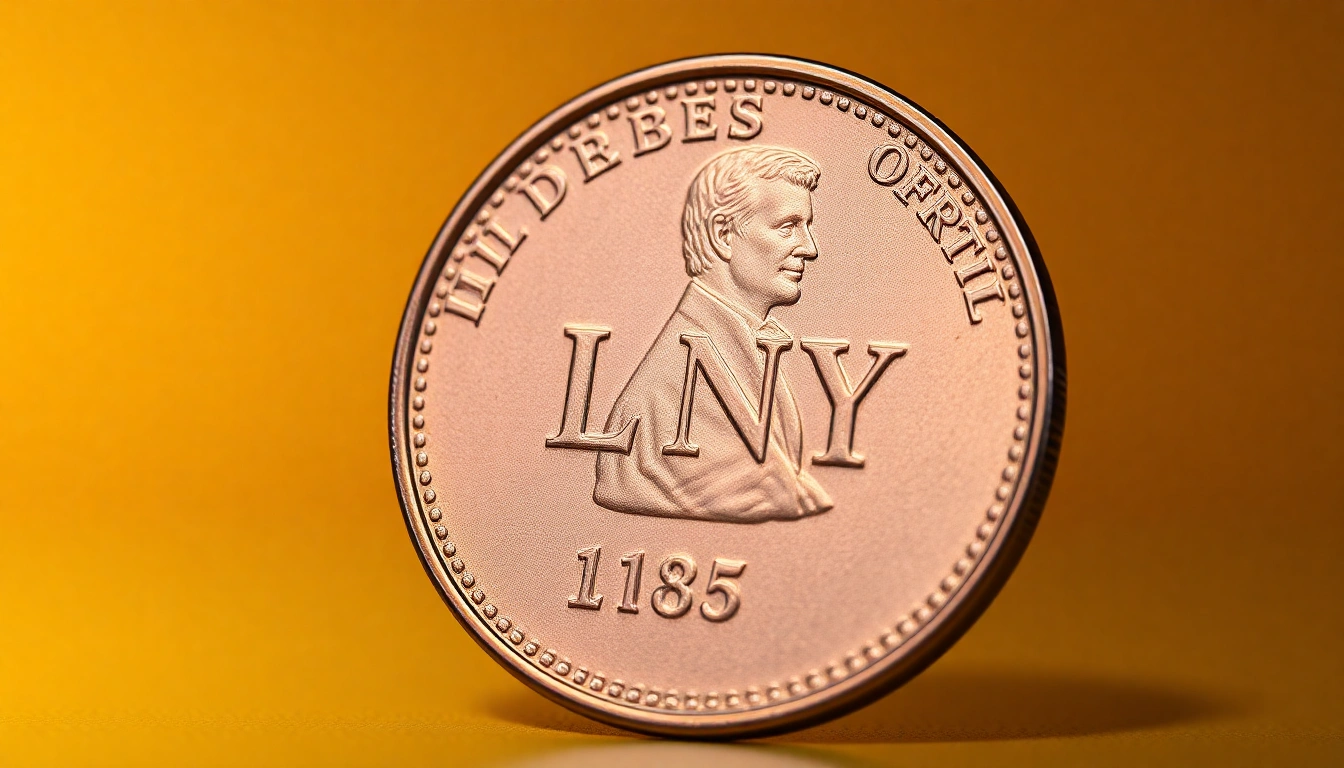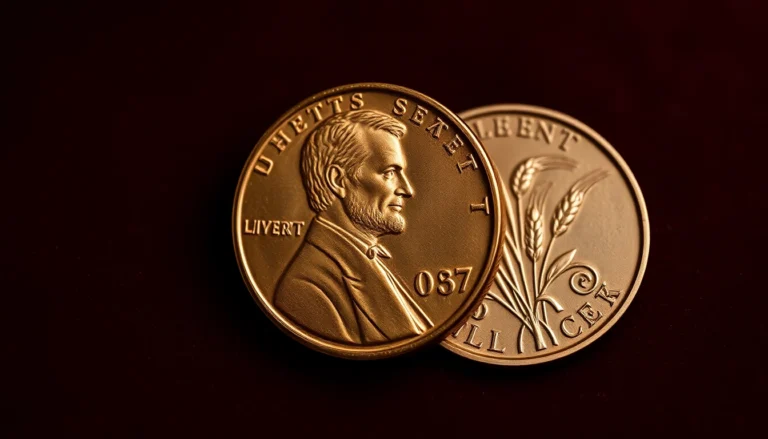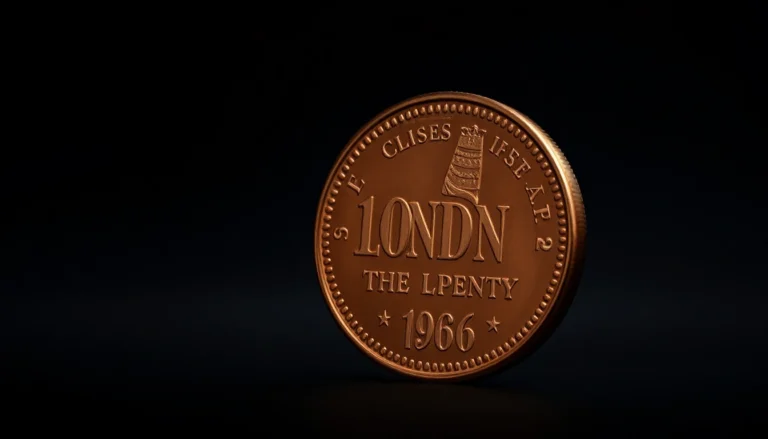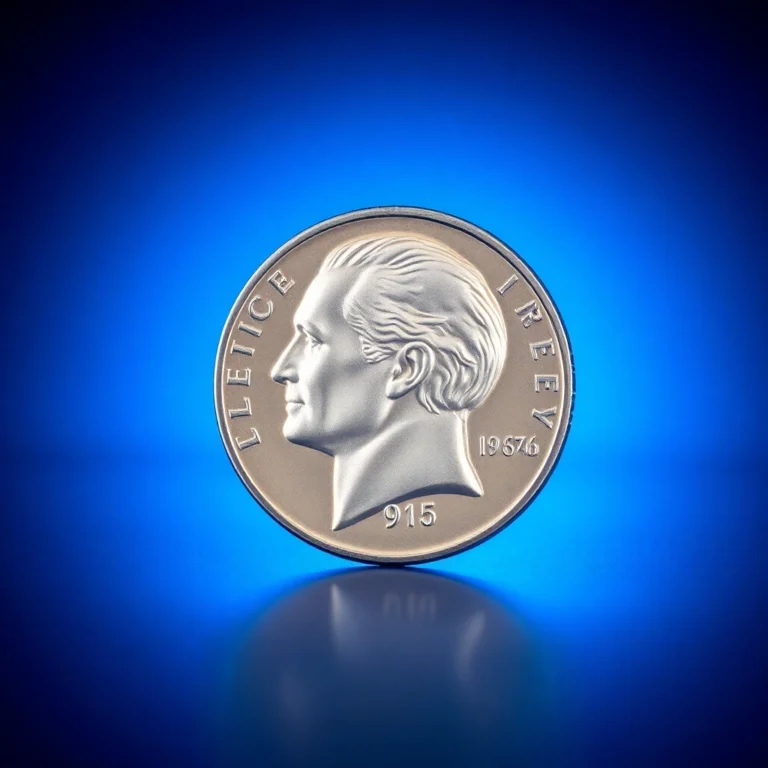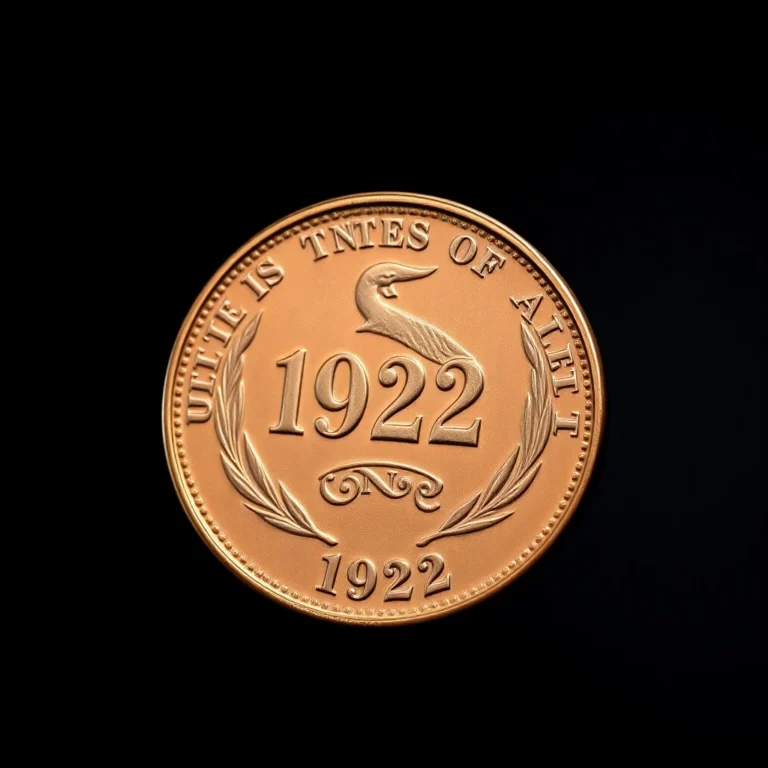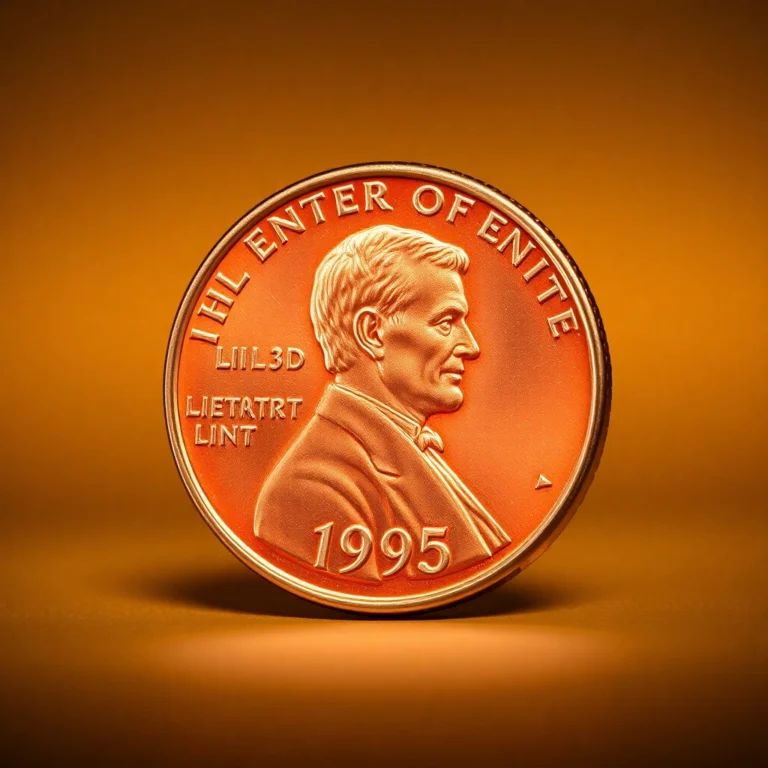In the world of coin collecting, few series spark as much intrigue and dedication as the Lincoln penny. With its rich history and enduring legacy, this humble coin has become a cornerstone for collectors seeking both historical significance and numismatic value. The Lincoln penny is more than just pocket change; it’s a portal into American history, brimming with stories of rarity, design changes, and minting marvels.
In this article, we’ll delve into ‘7 Key Dates in Lincoln Penny History That Every Collector Should Know’, uncovering the pivotal moments that have shaped this iconic coin’s journey. Each date not only marks a significant event in minting history but also provides insight into why these coins are so coveted by collectors today. From elusive mintages to intriguing design shifts, these seven dates will guide you through the nuances of collecting Lincoln pennies.
Prepare to be captivated by tales of rarity and potential fortune as we explore these essential milestones. Whether you’re a seasoned numismatist or a curious newcomer, these key dates offer a treasure trove of knowledge—and possibly, a valuable addition to your collection.
1. 1909-S VDB Lincoln Cent
The 1909-S VDB Lincoln Cent is a crown jewel among numismatists, marking an iconic start to the Lincoln penny series. Struck in San Francisco, this penny stands out not only for its historical significance as the first year of issue but also for its scarcity and the controversy surrounding designer Victor David Brenner’s initials, “VDB,” prominently displayed on the reverse. Only 484,000 of these coins were minted, making it a must-have for serious collectors. 🪙
Key identifying features include the “S” mintmark below the date on the obverse and the “VDB” initials on the reverse at the bottom center edge. No major varieties or errors are known for this coin, but its rarity in higher grades significantly impacts its market value. 💰
| Grade | Value Range |
|---|---|
| Good (G-4) | $750-$1,000 |
| Very Good (VG-8) | $950-$1,200 |
| Fine (F-12) | $1,200-$1,500 |
| Very Fine (VF-20) | $1,500-$2,000 |
| Extremely Fine (EF-40) | $2,000-$3,500 |
| About Uncirculated (AU-50) | $3,500-$5,500 |
| Mint State (MS-60) | $7,000-$9,000 |
| Gem Mint State (MS-65) | $20,000-$25,000 |
2. 1914-D Lincoln Cent
The 1914-D Lincoln Cent stands out as a key piece in the storied history of American coinage. Struck at the Denver Mint, this penny is famed among collectors for its rarity and historical significance. In 1914, the mintage was limited to only 1,193,000 coins, creating a sustained demand among numismatists. As a result, the 1914-D remains one of the most coveted coins in the Lincoln Cent series. 🪙
Key identifying features include the distinct ‘D’ mintmark located beneath the date on the obverse side. The coin’s design, crafted by Victor D. Brenner, features President Abraham Lincoln’s profile, a design first introduced in 1909. While the 1914-D does not have major acknowledged varieties, collectors should be vigilant for counterfeits and altered coins, as these are common due to its high value.
| Grade | Value Range |
|---|---|
| Good (G-4) | $200-$300 |
| Very Good (VG-8) | $350-$450 |
| Fine (F-12) | $500-$700 |
| Very Fine (VF-20) | $1,000-$1,200 |
| Extremely Fine (EF-40) | $2,000-$2,500 |
| About Uncirculated (AU-50) | $3,000-$4,000 |
| Mint State (MS-60) | $6,000-$7,500 |
| Gem Mint State (MS-65) | $15,000-$20,000 |
3. 1922 No D Lincoln Cent
The 1922 No D Lincoln Cent is a fascinating anomaly in the world of coin collecting, emerging from the turbulent economic backdrop of the early 1920s when the Denver Mint was the sole producer of Lincoln pennies. Due to a die error, some coins were struck without the “D” mint mark, creating a rarity that collectors eagerly seek. This coin is a testament to the challenges faced by mints during times of high demand and limited resources.
Identifying a genuine 1922 No D Lincoln Cent requires careful examination. Key features include a weak or missing “D” mint mark on the reverse, while the obverse may display a slightly blurred image of Lincoln. This rarity also exists in various die pairings, with the most desirable being Die Pair 2, which ensures the strongest obverse features.
| Grade | Value Range |
|---|---|
| Good (G-4) | $650-$800 |
| Very Good (VG-8) | $800-$1,000 |
| Fine (F-12) | $1,000-$1,500 |
| Very Fine (VF-20) | $1,500-$2,000 |
| Extremely Fine (EF-40) | $2,000-$3,000 |
| About Uncirculated (AU-50) | $3,000-$4,500 |
| Mint State (MS-60) | $5,000-$7,000 |
| Gem Mint State (MS-65) | $10,000-$15,000 |
4. 1931-S Lincoln Cent
The 1931-S Lincoln Cent is a standout piece in the realm of coin collecting, renowned for its scarcity and historical significance. Minted during the Great Depression, only 866,000 of these coins were produced, making it one of the lowest mintage years for the Lincoln series. Collectors prize this coin not only for its rarity but for its representation of an era marked by economic struggle.
Key identifying features of the 1931-S Lincoln Cent include the traditional wheat ears reverse design, along with the ‘S’ mintmark below the date on the obverse. No major varieties or errors are known for this year, which adds to the allure of finding one in premium condition.
| Grade | Value Range |
|---|---|
| Good (G-4) | $70-$85 |
| Very Good (VG-8) | $90-$110 |
| Fine (F-12) | $125-$150 |
| Very Fine (VF-20) | $200-$250 |
| Extremely Fine (EF-40) | $350-$450 |
| About Uncirculated (AU-50) | $500-$650 |
| Mint State (MS-60) | $700-$900 |
| Gem Mint State (MS-65) | $1,500-$2,200 |
5. 1955 Doubled Die Lincoln Cent
The 1955 Doubled Die Lincoln Cent is a legend in the numismatic world, captivating collectors with its dramatic and unmistakable error. This iconic penny, born from a die misalignment during the minting process, showcases prominent doubling on the obverse, particularly visible in the date “1955” and the inscriptions “LIBERTY” and “IN GOD WE TRUST.” This error created a buzz among collectors, and its rarity has only fueled its desirability over the years. 🪙
Although no major varieties exist for this error, minor die states can affect value, with sharper, clearer examples commanding premium prices. The coin’s allure is universal, attracting both seasoned and novice collectors eager to add this storied piece to their collection.
| Grade | Value Range |
|---|---|
| Good (G-4) | $800-$1,200 |
| Very Good (VG-8) | $1,200-$1,500 |
| Fine (F-12) | $1,500-$2,000 |
| Very Fine (VF-20) | $2,000-$3,000 |
| Extremely Fine (EF-40) | $3,000-$4,500 |
| About Uncirculated (AU-50) | $4,500-$6,000 |
| Mint State (MS-60) | $6,000-$10,000 |
| Gem Mint State (MS-65) | $10,000-$15,000 |
6. 1969-S Doubled Die Lincoln Cent
The 1969-S Doubled Die Lincoln Cent stands as one of the legendary rarities in the world of numismatics, captivating collectors with both its rarity and the dramatic nature of its error. Minted in San Francisco, this penny is famous for its pronounced doubling on the obverse, particularly visible in the words “LIBERTY” and “IN GOD WE TRUST”, as well as the date “1969”. This doubling is not to be confused with machine doubling, as it exhibits a distinct separation between the images, making it a true doubled die error. 🪙
While many coins from this era were produced with minor errors, the 1969-S Doubled Die is distinguished by its clear, unmistakable doubling, leading to its high desirability among collectors. Only a handful of these coins are known to exist, making them exceptionally rare finds. The value of this coin can vary widely based on its condition, as outlined in the table below:
| Grade | Value Range |
|---|---|
| Good (G-4) | $20,000-$25,000 |
| Very Good (VG-8) | $25,000-$30,000 |
| Fine (F-12) | $30,000-$35,000 |
| Very Fine (VF-20) | $35,000-$40,000 |
| Extremely Fine (EF-40) | $40,000-$50,000 |
| About Uncirculated (AU-50) | $50,000-$60,000 |
| Mint State (MS-60) | $60,000-$80,000 |
| Gem Mint State (MS-65) | $80,000-$100,000+ |
7. 1992 Close AM Lincoln Cent
For numismatists and casual collectors alike, the 1992 Close AM Lincoln Cent stands out as a fascinating and valuable anomaly. This penny, minted during a year of transition in the U.S. Mint’s design practices, features a unique spacing between the “A” and “M” in “AMERICA” on the reverse side. Unlike the standard Wide AM, this Close AM variety is the result of an error where the die intended for proof coins was used for some circulation strikes. 🪙
Key identifying features include the almost touching “A” and “M” in “AMERICA,” which distinguishes it from the more common Wide AM version. As with many numismatic treasures, the rarity of this error significantly enhances its desirability and value. Enthusiasts often seek this coin as part of a comprehensive collection of Lincoln pennies.
| Grade | Value Range |
|---|---|
| Good (G-4) | $300-$500 |
| Very Good (VG-8) | $500-$700 |
| Fine (F-12) | $700-$1,000 |
| Very Fine (VF-20) | $1,000-$1,500 |
| Extremely Fine (EF-40) | $1,500-$2,000 |
| About Uncirculated (AU-50) | $2,000-$3,000 |
| Mint State (MS-60) | $3,000-$5,000 |
| Gem Mint State (MS-65) | $5,000-$7,500 |
In your journey through Lincoln penny history, you’ve uncovered the magic behind the 1909-S V.D.B., the rarity of the 1914-D, the allure of the 1922 Plain, the scarcity of the 1931-S, the intrigue of the 1943 Copper, the significance of the 1955 Double Die, and the modern-day marvel of the 1992 Close AM. As you delve into the world of numismatics, remember to always verify authenticity and grade with a reputable expert—a critical step to safeguarding your investment.
In today’s market, Lincoln pennies are experiencing a resurgence, with collectors increasingly valuing their historical significance and potential for appreciation. As you add these storied coins to your collection, imagine the hands they’ve passed through and the eras they’ve survived. Coin collecting isn’t just about amassing pieces of metal; it’s about preserving history, sparking curiosity, and forging a tangible connection to the past. Let your passion for these little treasures fuel your journey through time.
FAQs
How does the grade of a Lincoln penny affect its value?
The grade of a Lincoln penny significantly impacts its value. Higher grade coins, which show minimal wear and retain original mint luster, are more valuable. Coins graded as “Mint State” (MS) often fetch higher prices compared to those with noticeable circulation wear. Professional grading by services like PCGS or NGC can provide a more accurate assessment of a coin’s condition and value.
What are some tips for authenticating rare Lincoln pennies?
To authenticate rare Lincoln pennies, examine details such as the date, mint mark, and overall design features. Use a magnifying glass to check for fine details and minting anomalies. Familiarize yourself with known counterfeits and consider consulting a professional numismatist or using third-party grading services for high-value coins to ensure authenticity.
What advice would you give to someone starting a Lincoln penny collection?
Start by gathering information on key dates and varieties, which are essential for a comprehensive collection. Begin with circulated coins to get familiar with different dates and mint marks, then gradually acquire higher-grade examples. Joining coin clubs or online forums can provide valuable insights and networking opportunities with fellow collectors.
Why are certain dates in Lincoln penny history considered historically significant?
Certain dates in Lincoln penny history are significant due to low mintages, design changes, or historical events. For example, the 1909-S VDB penny marks the first year of issue with designer Victor David Brenner’s initials, making it highly sought after. These key dates often reflect broader historical narratives, adding to their appeal among collectors.
What are some common varieties or errors found in Lincoln pennies?
Lincoln pennies exhibit various varieties and errors, including doubled dies, repunched mint marks, and off-center strikes. One notable variety is the 1955 doubled die, where the date and lettering appear doubled. These errors can occur during the minting process and often carry a premium due to their uniqueness and rarity.
